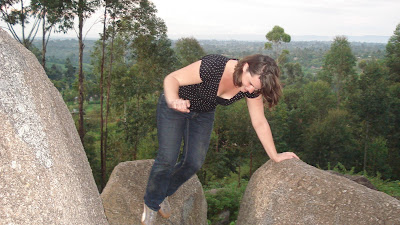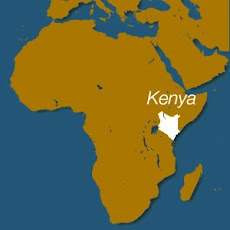I used to believe that Zanzibar was a mythical paradise, lost somewhere in the middle of the Indian Ocean. After having just spent a week-long retreat with my YAV group on the island, I realize my stereotype of the place proved false. Zanzibar is very real, and it's one of the most vibrant and incredible places I have ever been in my life.
Getting to Zanzibar is no easy feat. First my group spent sixteen hours on a bus from Nairobi to Dar-es-Salaam, Tanzania. Then from Dar we had to take a ferry twenty-five miles out into the ocean in order to reach our island destination. Yet on that particular day, the ocean was extremely rough and choppy. Giant waves rocked our tiny boat to a point where I craved to get back onto solid land. I have never been sea sick in my life. But that was something else. Needless to say, my group was exhausted when we finally reached Zanzibar and we were ready for a week of relaxation on an island in the sun.
I have h
 ad the opportunity in my life to visit many amazing places, but I would say that Zanzibar is now at the top of my list. What makes the island so interesting is its blend of African, Arabic, and European influences both historically as well as in the present day. In the old Stone Town, the island's city center and the place where my group stayed, I felt as though I could have been wandering around the streets of Paris. The narrow ally ways and huge stone churches reminded me of some European cities that I have visited. Yet the architecture was clearly Middle Eastern in character, a sign of a predominant Arabic presence throughout the island's history.
ad the opportunity in my life to visit many amazing places, but I would say that Zanzibar is now at the top of my list. What makes the island so interesting is its blend of African, Arabic, and European influences both historically as well as in the present day. In the old Stone Town, the island's city center and the place where my group stayed, I felt as though I could have been wandering around the streets of Paris. The narrow ally ways and huge stone churches reminded me of some European cities that I have visited. Yet the architecture was clearly Middle Eastern in character, a sign of a predominant Arabic presence throughout the island's history.When I describe the place as vibrant, I mean that every sense tingles when you are on the island. The noisy street vendors and honking horns mixed with the unruly smells of the fish market will push you to escape the crowded streets of Stone Town and venture out into more peaceful parts of the island. Once you get away from town, you will likely find small farming villages where people grow a variety of tropical fruits. Zanzibar, both past and present, is also famous for its spice industry. My group took a tour of a spice plantation where we saw, touched, and tasted all the spices we use at home, but have never known where they come from or what they look like before being processed. Cinnamon, nutmeg, red curry, yellow curry, masala, turmeric, pepper corns, vanilla, and cloves were a few of the many spices we sampled that day. As it turns out, Zanzibar still supplies 60% of the world's cloves... who knew?
The island's vibrancy does not end at the smells and sounds of the Stone Town, the spices, or even the gorgeous white sandy beaches on the coasts. What I think is most unique about Zanzibar is that its local community lives side by side with the throngs of outsiders who flock to Zanzibar in droves. It seemed as though most of the local people were completely genuine, and relatively unaffected by the tourist industry. My group made many connections, and several times we found ourselves being helped out by people who were not trying to con us or expect tips. This feeling was a welcomed change from Nairobi, where it is unwise to trust strangers or to accept help on the street.
 The lounge at our hostel
The lounge at our hostel  A cave where slave traders hid slaves when the trade became illegal at the end of the 19th century.
A cave where slave traders hid slaves when the trade became illegal at the end of the 19th century.We made one friend in particular who still sticks out in my mind; Ernest the Rastafarian chef. We met Ernest one night when we were out on the town, and then happened to run into him again the next day. He spent the entire afternoon and evening showing us around the island and taking us to good restaurants. With his long dread locks, lazy eye, and slightly slurred speech, I never would have guessed he had studied with an Italian master chef at a school in Dar-es-Salaam. But he assured us he had, and that his dream was to one day become a master chef of his own restaurant, 'Cafe Ernesto.' He proved his artistry to us as we were having dinner with him at a local cafe. He first decided the service was too slow so he got up and went back into the kitchen to help out. When he reappeared, he came with the waiter bringing our food. Then he called out to the waiter, 'Keep it delicious. Let's go!' And they disappeared back into the kitchen again. When Ernest reappeared the second time, he had prepared mangoes beautifully on a plate for each of us, at no extra charge. The cook came out at the end of our meal and asked if Ernest could come back the next day and teach them about some of the finer arts of cooking. Very impressive.
As I said before, Zanzibar is a truly incredible place. Its cultural and natural vibrancy, and the overall beauty of the small island off the coast of Tanzania was well worth the sixteen-hour bus ride in the end. I can't wait to go back!



















